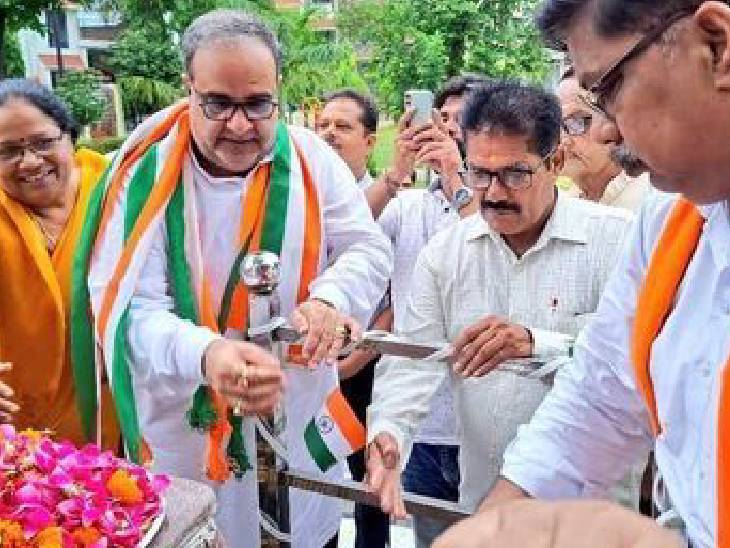
Will Uttar Pradesh’s New Leadership Bring Real Change?
Uttar Pradesh, India’s most populous state with a population of over 220 million, has historically been at the center of political, economic, and social challenges. With the recent transition in leadership, the question remains: will the new administration bring about the real changes the state urgently needs, or will it be another shift in power without any significant impact on the lives of its residents?
A New Beginning?
The state, often regarded as a microcosm of India’s complex political landscape, has witnessed numerous leadership changes over the years. Despite this, it continues to grapple with critical issues like poverty, unemployment, inadequate healthcare, and poor infrastructure. Uttar Pradesh contributes approximately 8% to India’s GDP, but its economic growth has lagged behind many other states. The state’s per capita income, at ₹50,500 (as per 2022-23 estimates), is one of the lowest in the country, highlighting the vast challenges that lie ahead for the new government.
The state’s leaders have set ambitious targets, focusing on economic development, infrastructural improvement, and social welfare programs. However, experts remain cautious, pointing out that similar promises made by previous governments have not translated into long-term solutions for the state’s pressing issues.
A Focus on Infrastructure and Economic Growth
The new leadership has outlined plans to prioritize infrastructure development, which is essential for boosting economic growth and attracting investments. Key projects in the pipeline include the construction of the Purvanchal Expressway, the Ganga Expressway, and the expansion of the Eastern Peripheral Expressway. The government aims to transform Uttar Pradesh into a logistics and industrial hub, with a focus on improving connectivity to other major industrial regions.
In recent years, the state has witnessed an uptick in industrial investments, with sectors like IT, agriculture, and manufacturing playing a crucial role. Uttar Pradesh has also been recognized for its significant strides in ease of doing business, ranking 2nd in the State Business Reform Action Plan (SBRAP) by the Department for Promotion of Industry and Internal Trade (DPIIT). With the introduction of the Uttar Pradesh Investor Facilitation Center and the UP Electronics Manufacturing Policy, the government is aiming to create more jobs and improve the state’s economic output.
However, the challenge lies in ensuring that the benefits of economic growth are distributed equitably. Despite these developments, Uttar Pradesh remains home to the highest number of poor people in India. According to the NITI Aayogreport, around 32% of the state’s population lives below the poverty line. Additionally, the state’s unemployment rate, hovering at around 4.1% as of 2023, is still a major concern.
Addressing Healthcare and Education
Education and healthcare are two sectors that require immediate attention. Uttar Pradesh’s literacy rate, although improving, stands at 67.7% (as per the 2021 Census), far below the national average of 77.7%. The new government has promised to expand educational infrastructure, with an emphasis on improving access in rural areas and providing quality education for the underprivileged. Initiatives like the UP Education Development Program aim to increase enrollment rates and improve infrastructure in schools.
Similarly, healthcare remains a critical issue, particularly in rural areas. Uttar Pradesh has the highest infant mortality rate (IMR) among Indian states, at 43 per 1,000 live births (National Family Health Survey, 2020). While efforts to improve healthcare infrastructure, including the construction of new hospitals and clinics, are underway, the true challenge will be to ensure equitable access to quality care for all residents.
Political and Social Landscape
Uttar Pradesh’s political landscape is shaped by its diverse population, with a complex web of caste, religion, and regional identities playing a significant role. The new leadership faces the challenge of balancing the needs and aspirations of various communities, especially in a state where caste-based politics has long been a determining factor in electoral outcomes.
The leadership has promised to address the concerns of marginalized communities and promote inclusive governance. Policies aimed at empowering women, such as Mission Shakti for women’s safety, and efforts to improve the condition of farmers through schemes like the Kisan Kalyan Yojana have been outlined. The state government also plans to create 20 lakh new jobs in the next five years, with a special focus on skill development in the youth.
However, despite these intentions, the implementation of such policies will be the true test. The state’s record on governance, transparency, and welfare schemes has been mixed, and the new leadership must prove that it can deliver on its promises.
The Road Ahead
Uttar Pradesh, with its vast population and rich diversity, remains a state of contradictions. While it is a key driver of India’s economy, it also lags behind in several key areas of development. The new leadership has outlined an ambitious roadmap for change, but whether it can overcome the entrenched challenges of poverty, unemployment, corruption, and social inequality will determine its legacy.
The road ahead for Uttar Pradesh will not be easy. However, with targeted efforts in education, healthcare, infrastructure, and social welfare, the state’s leadership has the potential to transform it into a model of inclusive development. The people of Uttar Pradesh, who have long endured the hardships of economic disparity, will be watching closely to see whether the promises of change can finally be translated into tangible improvements in their lives.
In the coming months and years, the world will be watching Uttar Pradesh to see if its new leadership can bring about the real, lasting change it so desperately needs.


